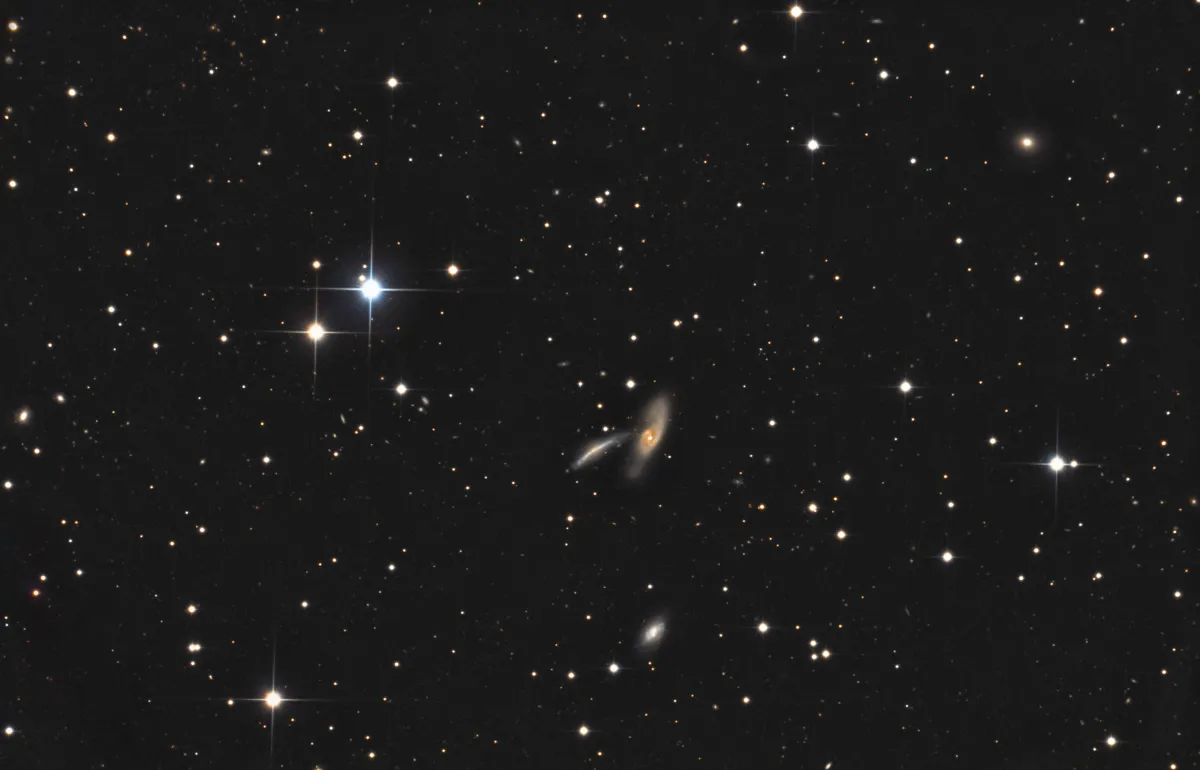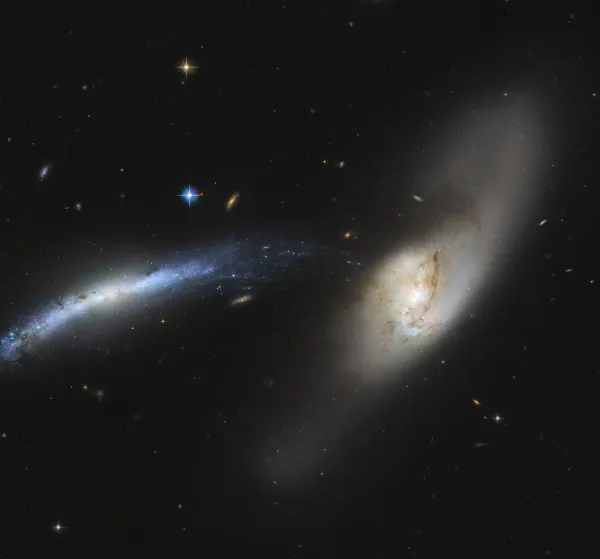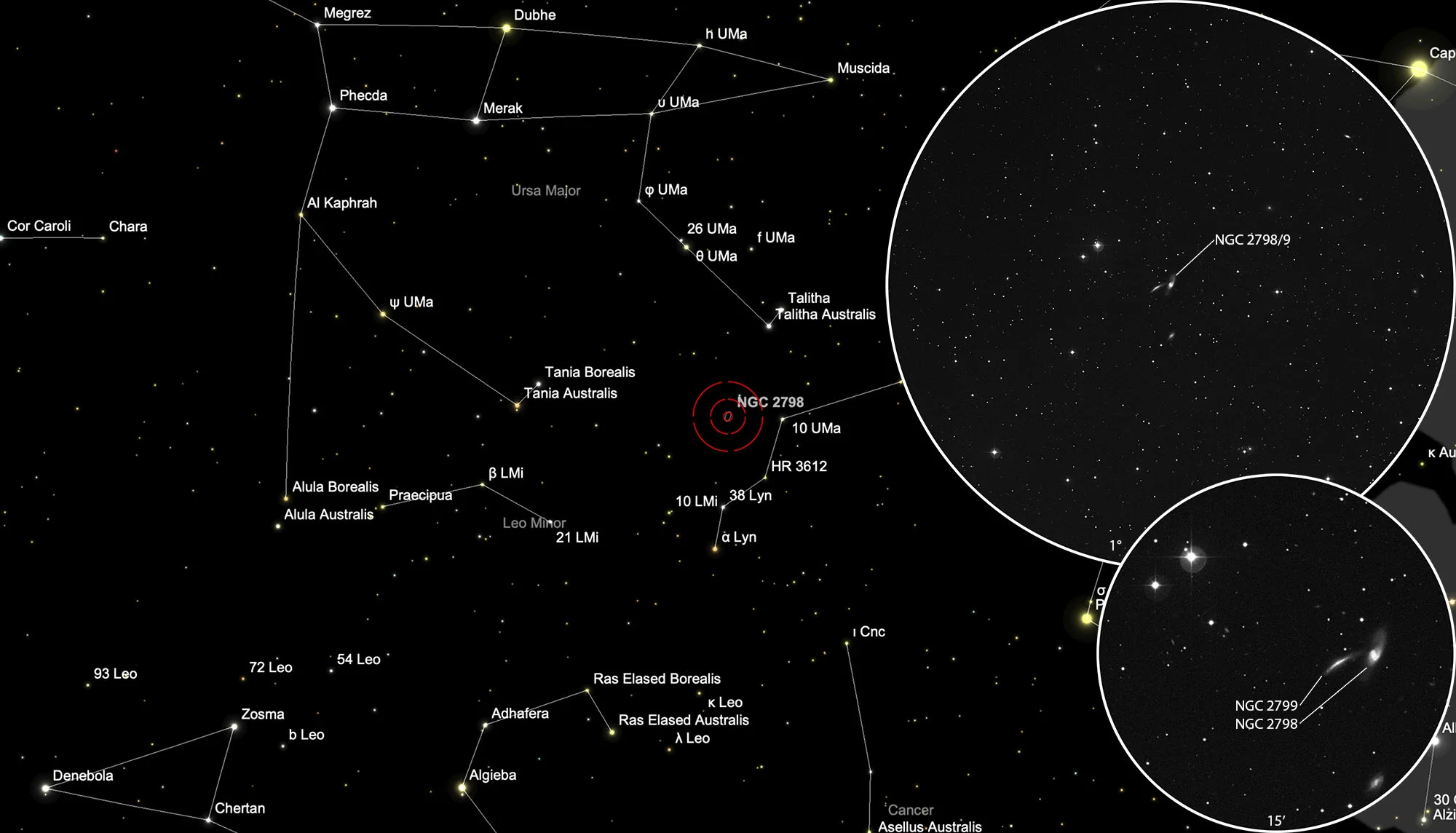Pair of Galaxies NGC 2798/9 (Arp 283)

History
On 14 January 1788 the German-British astronomer William Herschel pointed his large 18.7 inch reflective telescope to the sky and saw a faint nebula drifting by, which he cataloged as II 708 and described as «pretty bright, small, stellar». [464] His son John included it in his 1864 «Catalogue of Nebulae and Clusters of Stars» as GC 1788 (NGC 2798 by Dreyer). [467] On 9 March 1874, the British astronomer Ralph Copeland revisited the nebula using Lord Rosse's giant 72 inch reflector at Birr Castle and found another one (NGC 2799) following it. [277]
In Halton Arp's 1966 «Atlas of Peculiar Galaxies», the two galaxies NGC 2798 and NGC 2799 are listed as Arp 283. He noted: «Arc of barely resolved knots curves into nucleus of larger galaxy.» [199]
Physical Properties

This is a pair of interacting galaxies. The gravity of the larger galaxy NGC 2798 pulls stars from the NGC 2799 which fall to the centre like a waterfall. Such mergin processes can take place over several hundred million to over a billion years. But due to the sheer amount of space between stars means that stellar collisions are unlikely and stars typically drift past each other. Measured distance is about 28 Mpc [145]
| Name | RA | Dec | Type | bMag | vMag | B-V | SB | Dim | PA | z | D(z) | MD | Dreyer Description | Identification, Remarks |
|---|---|---|---|---|---|---|---|---|---|---|---|---|---|---|
| NGC 2798 | 09 17 22.9 | +42 00 00 | Gx (SBa/P) | 13.0 | 12.3 | 0.7 | 13.2 | 2.8 × 0.9 | 160 | 0.005757 | 24.32 | 27.100 | pB, S, stellar | WH II 708; GC 1788; UGC 4905; MCG 7-19-55; CGCG 209-45; IRAS 09141+4212; KCPG 195A; KUG 0914+422A; VV 50; Arp 283 |
| NGC 2799 | 09 17 31.0 | +41 59 38 | Gx (SBm) | 14.3 | 13.7 | 0.6 | 13.5 | 1.9 × 0.5 | 125 | 0.005581 | 23.57 | 27.400 | F, cL, vmE, f II 708 | GC 5467; UGC 4909; MCG 7-19-56; CGCG 209-46; KCPG 195B; Arp 283; VV 50; KUG 0914+422B |
Finder Chart
The pair of galaxies NGC 2798/9 is located in constellation Lynx. The best time for observation is October to July, when it is high in the sky during night.
